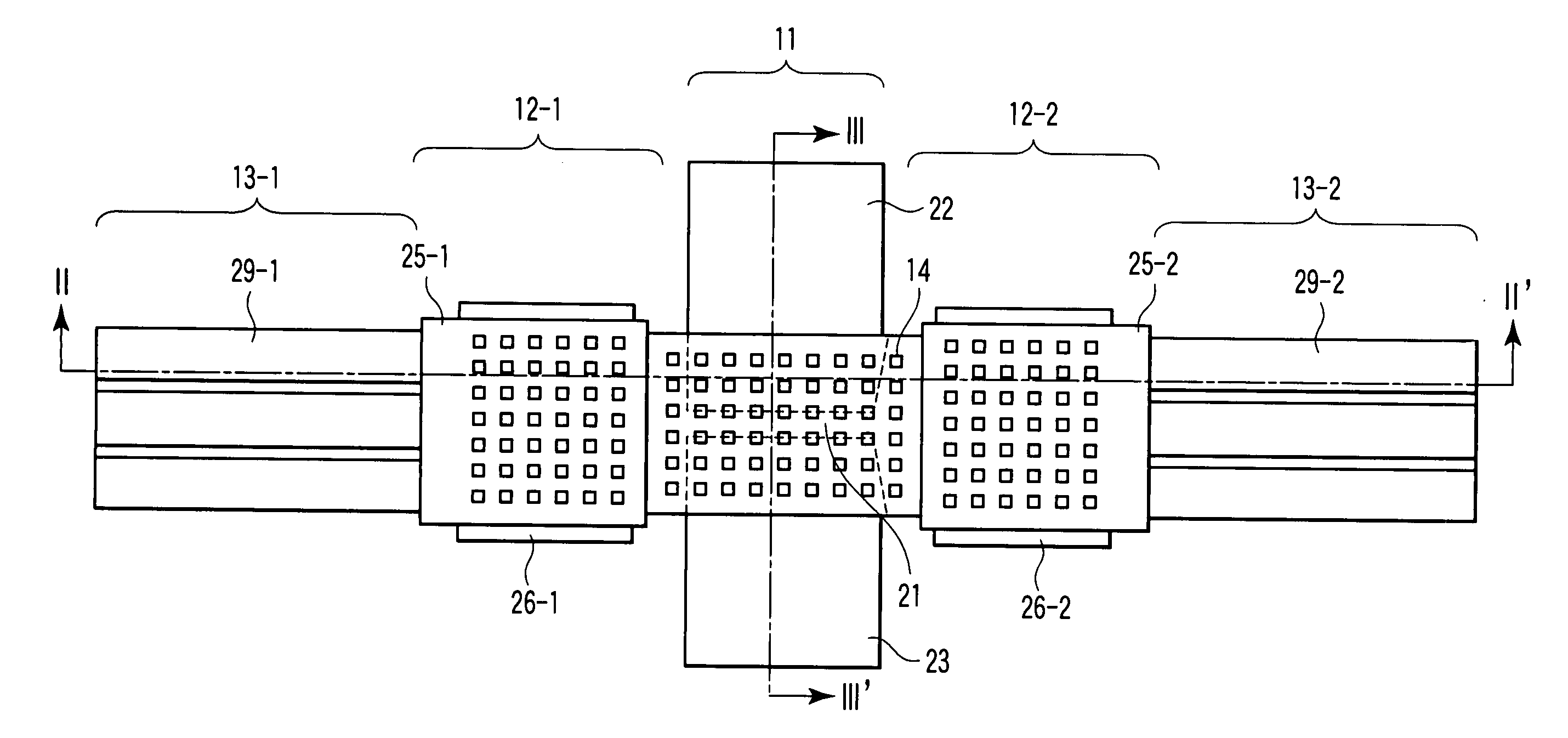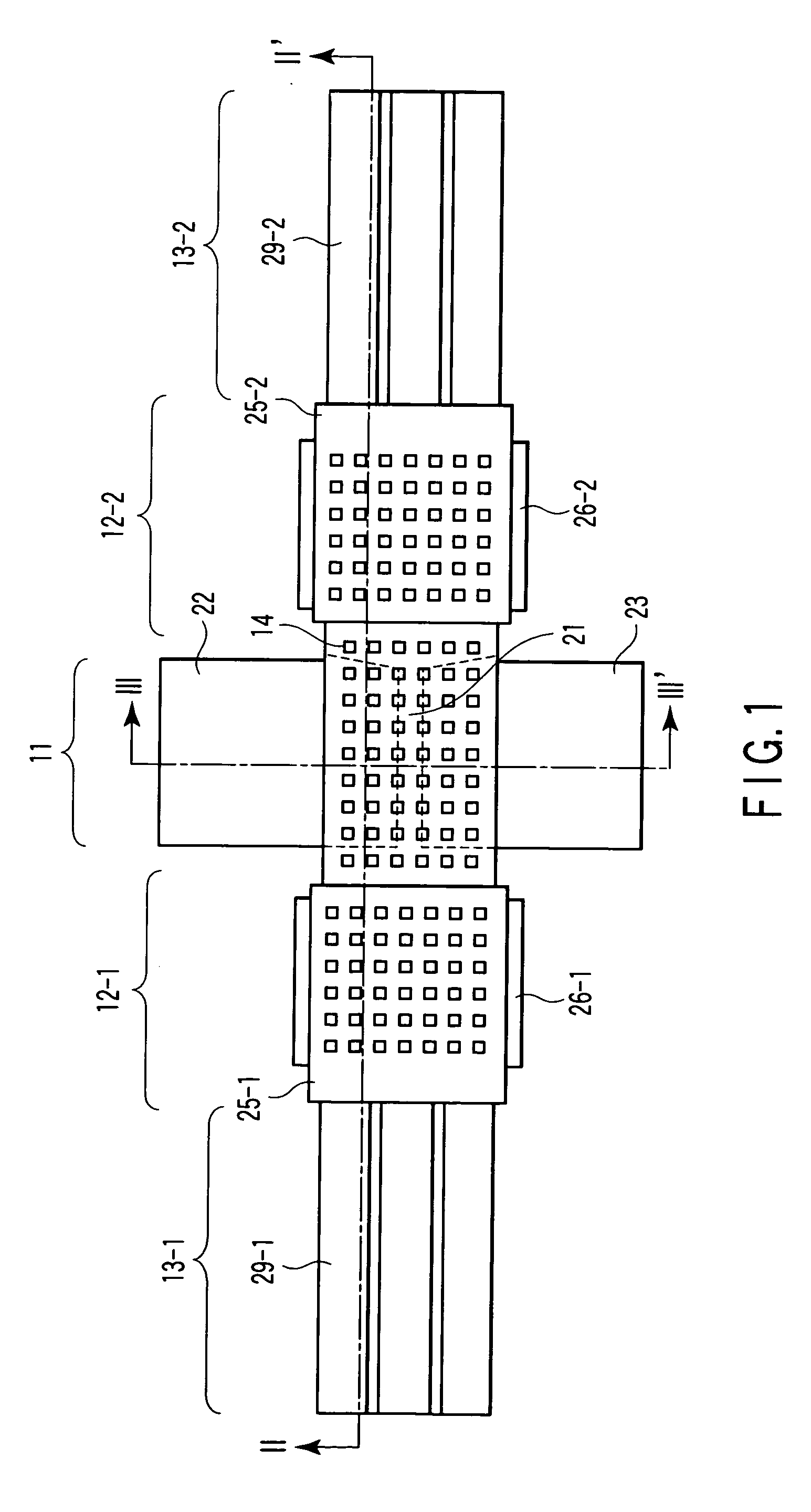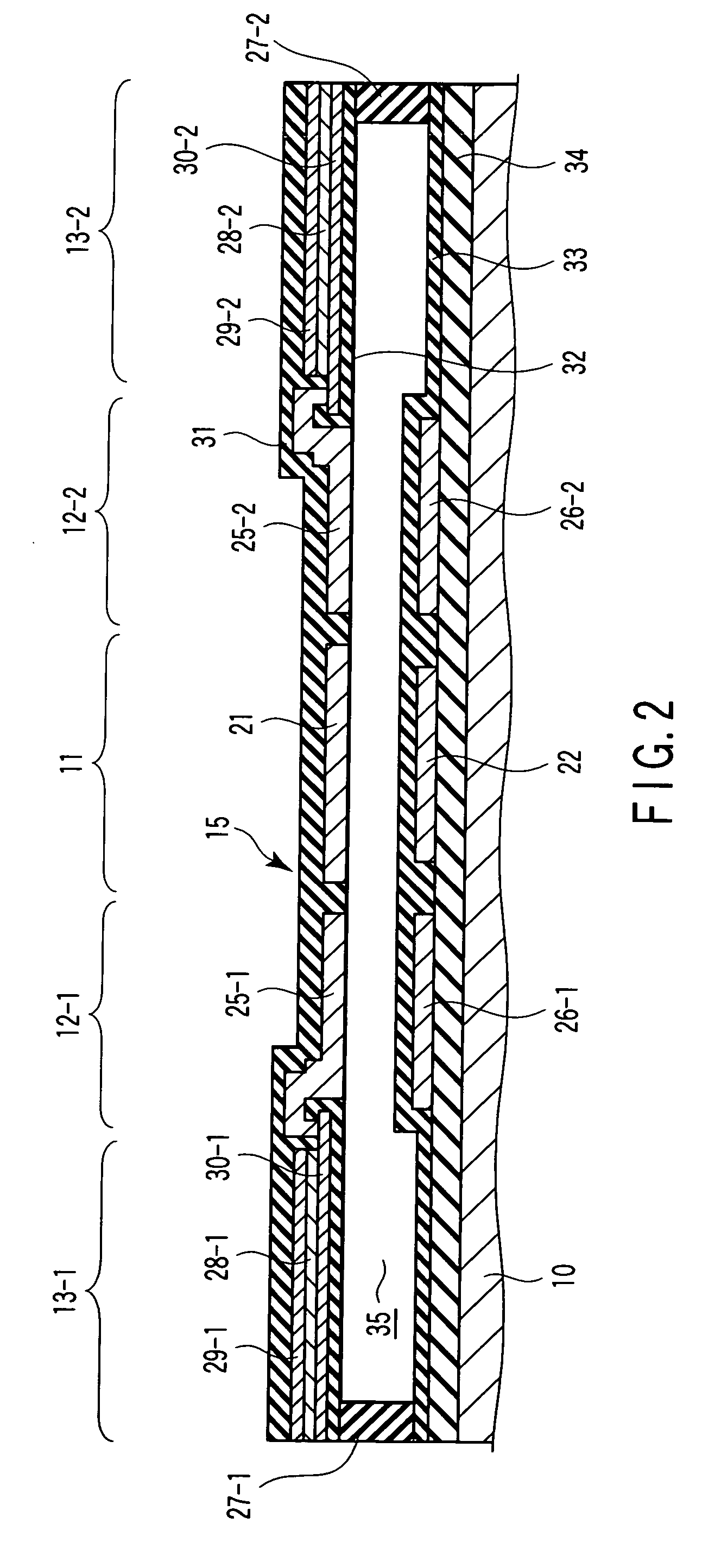Semiconductor device formed by using MEMS technique
a technology of mems and semiconductors, applied in the direction of relays, generators/motors, contacts, etc., can solve the problems of high power, increase in cost, and not suitable for portable devices
- Summary
- Abstract
- Description
- Claims
- Application Information
AI Technical Summary
Problems solved by technology
Method used
Image
Examples
first embodiment
[0046] FIGS. 1 to 3 are views for explaining a semiconductor device according to the first embodiment of the present invention. FIG. 1 is a plan view of a variable capacitor. FIG. 2 is a sectional view taken along a line II-II′ in FIG. 1. FIG. 3 is a sectional view taken along a line III-III′ in FIG. 1. This semiconductor device comprises a variable capacitor unit 11, electrostatic actuator units 12-1 and 12-2, and piezoelectric actuator units 13-1 and 13-2. The piezoelectric actuator unit 13-1, electrostatic actuator unit 12-1, variable capacitor unit 11, electrostatic actuator unit 12-2, and piezoelectric actuator unit 13-2 are linearly arranged in one direction. These units are formed in a structure formed such that the two ends of an elastic member 15 are fixed on a substrate (e.g., a silicon substrate) 10 with anchors 27-1 and 27-2. A hollow 35 is formed between the elastic member 15 and the substrate 10. When the piezoelectric actuator units 13-1 and 13-2 and the electrostatic...
second embodiment
[0070]FIGS. 9 and 10 are views for explaining a semiconductor device according to the second embodiment of the present invention. FIG. 9 is a plan view of a variable capacitor. FIG. 10 is a sectional view taken along a line X-X′ in FIG. 9. A cross-section taken along a line III-III′ in FIG. 9 is the same as that in FIG. 3.
[0071] This semiconductor device comprises a variable capacitor unit 11, electrostatic actuator unit 12, and piezoelectric actuator unit 13. These units are formed in a structure formed such that one end of an elastic member 15 is fixed on a substrate (e.g., a silicon substrate) 10 with an anchor 27. A hollow 35′ is formed between the elastic member 15 and the substrate 10. When the piezoelectric actuator unit 13 and the electrostatic actuator unit 12 are driven, the other end (an upper electrode 21 of the variable capacitor unit 11) of the elastic member 15 deforms to move close to the substrate 10 (a lower electrode 22 of the variable capacitor unit 11), and the...
third embodiment
[0074]FIG. 11 is a view for explaining a semiconductor device according to the third embodiment of the present invention. FIG. 11 is a plan view of a variable capacitor. This semiconductor device comprises a variable capacitor unit 11, electrostatic actuator units 12-1 and 12-2, and piezoelectric actuator units 13-1, 13-2, 13-3, and 13-4. In the third embodiment, the variable capacitor unit, electrostatic actuator units, and piezoelectric actuator units are not arranged linearly, but the piezoelectric actuator units 13-1, 13-2, 13-3, and 13-4 are arranged nonlinearly. More specifically, the piezoelectric actuator units 13-1 and 13-3 are arranged on the opposite sides of the electrostatic actuator unit 12-1, and the piezoelectric actuator units 13-2 and 13-4 are arranged on the opposite side of the electrostatic actuator unit 12-2.
[0075] With such an arrangement as well, the device operates basically in the same manner as in the first embodiment, and substantially the same functions...
PUM
 Login to View More
Login to View More Abstract
Description
Claims
Application Information
 Login to View More
Login to View More - R&D
- Intellectual Property
- Life Sciences
- Materials
- Tech Scout
- Unparalleled Data Quality
- Higher Quality Content
- 60% Fewer Hallucinations
Browse by: Latest US Patents, China's latest patents, Technical Efficacy Thesaurus, Application Domain, Technology Topic, Popular Technical Reports.
© 2025 PatSnap. All rights reserved.Legal|Privacy policy|Modern Slavery Act Transparency Statement|Sitemap|About US| Contact US: help@patsnap.com



